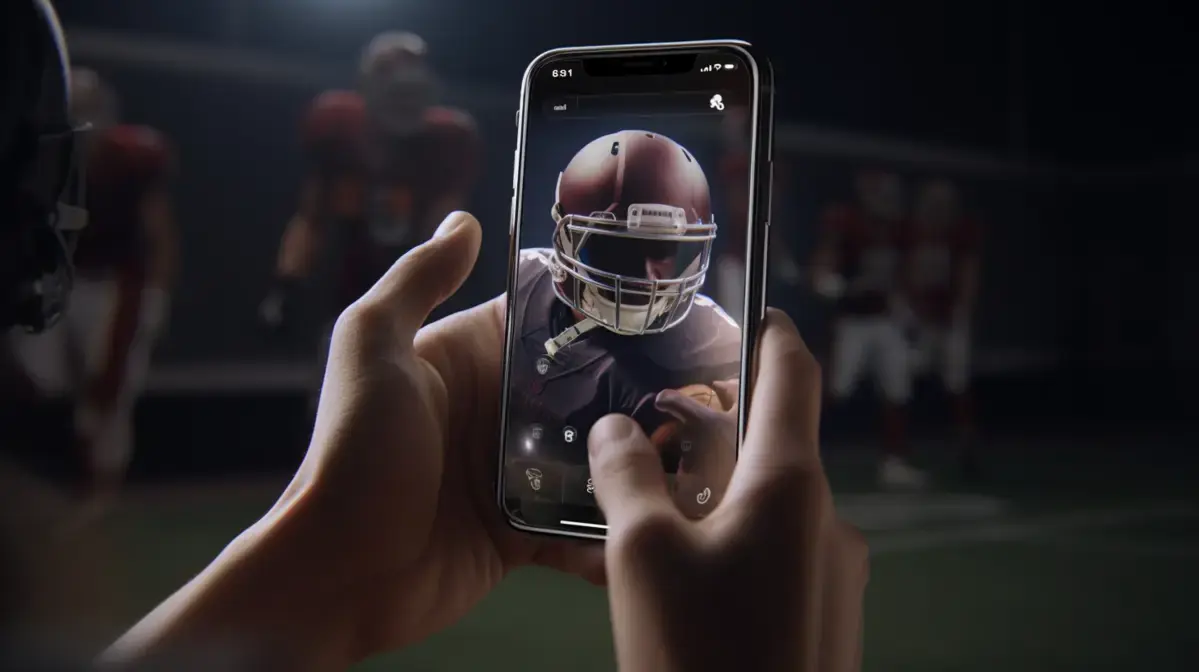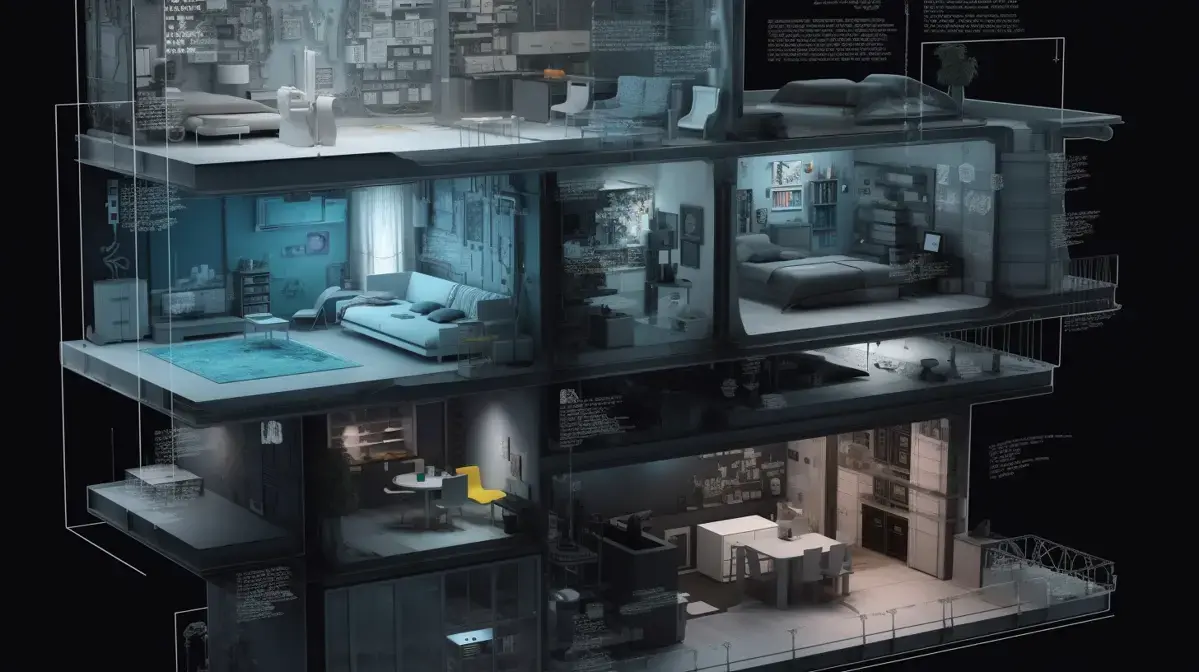Augmented reality (AR) has revolutionized various industries, including healthcare, education, and retail. One of the most impressive features of AR is its ability to enhance customer experience in brick-and-mortar stores. Retailers can now use AR to provide customers with an interactive shopping experience that allows them to visualize products in their own environment before making a purchase.
Another area where AR has made significant strides is in healthcare. Medical professionals now have access to advanced visualization tools that help them diagnose and treat patients more effectively. Using augmented reality technology, doctors can view medical imaging data such as CT scans or MRIs overlaid on a patient’s body for better accuracy during surgery.
Education is another industry where the impact of augmented reality cannot be ignored. Teachers are using this technology as an effective tool for engaging students by creating immersive learning experiences that go beyond traditional classroom lectures.
It’s clear how much potential augmented reality has across multiple sectors and industries—it enables businesses and organizations alike to create powerful visualizations or simulations which improves knowledge retention levels among users/customers/patients/students etc., thereby driving increased engagement – leading towards greater effectiveness overall. If you’re interested in discovering more about this transformative tech trend follow us at Argeopin – your go-to source on all things Augmented Reality.
Table Of Contents
- Key Points
- Introduction to Augmented Reality Technology
- Interesting Facts
- How Augmented Reality is Revolutionizing the Retail Industry
- The Impact of Augmented Reality on Real Estate and Architecture Sector
- The Role of Augmented Reality in Healthcare, Education, and Training
- FAQs
- Advancements in Gaming Industry with Augmented Reality Integration
- Sports & Entertainment: Enhancing Fan Experiences With Augmented Reality
- Manufacturing and Construction Industries’ Transformation through AR technology.
- Key Takeaways

Key Points
-
- Augmented Reality (AR) is transforming the retail industry by enhancing customer experiences and increasing sales.
- In healthcare, AR is being used for surgical assistance, medical training and visualization of patient data.
- The use of AR in manufacturing has improved efficiency in production processes and reduced errors resulting in cost savings.
- The travel industry benefits from using augmented reality for marketing purposes as well as providing customers with immersive cultural experiences through virtual tourism.
Introduction to Augmented Reality Technology
Augmented Reality (AR) technology is rapidly transforming the way we interact with our surroundings. It blends the real world with digital information and enhances our perception of reality, offering us fascinating and exciting experiences. Even though AR has been around for a while, it is only now that its true potential is being realised.
Another benefit of using augmented reality technology is its ability to make training more effective and enjoyable simultaneously. She has seen companies use AR headsets in manufacturing facilities so workers can learn about complex machinery through interactive simulations without putting themselves at risk of injury during practical sessions.
AR also provides amazing possibilities for marketing campaigns where brands are able to engage with consumers like never before; they’re giving them personalised content delivered through immersive environments, rather than traditional advertising mediums such as tv commercials or billboards which may not grab attention as effectively due eye fatigue from screens everywhere today.
Interesting Facts
- Over 1 billion people are projected to use augmented reality by 2020.
- The global market size for AR is expected to reach $90 billion by 2020.
- The healthcare industry uses AR for visualizing and planning surgeries, as well as training medical students in complex procedures.
- In the retail industry, companies like IKEA and Sephora use AR technology to enhance shopping experiences for customers.
- Airlines such as British Airways have used AR in their safety videos, making them more engaging and memorable.

How Augmented Reality is Revolutionizing the Retail Industry
Augmented reality technology has taken the world by storm. If you haven’t heard of it yet, you’re missing out on a whole new dimension of possibilities. Think about it like this: imagine standing in front of a regular old building but now with your phone or tablet, and all sorts of information starts popping up on your screen – history about the building, fun facts, even what events might be happening inside later that night.
It’s not just limited to buildings either. Augmented reality can enhance everything from advertisements to education and entertainment. For example, there are apps that let you see how furniture would fit in your living space before purchasing anything; Or watching live sports games with real-time stats overlaid onto the screen so viewers never miss any action.
The Impact of Augmented Reality on Real Estate and Architecture Sector
Augmented reality technology has been on the rise in recent years and it’s no surprise why. The ability to blend digital information with real life environments opens up a whole new world of possibilities.
Imagine walking through a museum and having additional information about each exhibit displayed right before your eyes or playing virtual games that merge seamlessly into your surroundings. This is just some of what AR technology can offer.
This expert recalls their early experiences with AR, feeling like they had entered a sci-fi movie as digital objects appeared before them in real-time. They describe it as almost magical to see computer-generated images blend so flawlessly into the physical world around them.
From developing retail stores where customers can try on clothes without physically putting anything on, to revolutionizing interior design by allowing people to visualize furniture placements within their own homes; Augmented Reality has become essential across various industries such as gaming, education and healthcare among many others.
From its initial introduction onto mainstream platforms such as smartphones all over the globe – Augmented Reality Technology keeps evolving at breakneck speed extending beyond entertainment purposes which would transform humanity forever but only if we manage its growth responsibly.
The Role of Augmented Reality in Healthcare, Education, and Training
Augmented reality (AR) technology is a game-changer in the tech industry, and it’s not hard to see why. With AR, everyday objects and environments can be transformed into interactive experiences that blur the line between physical and digital worlds.
But it’s not just for entertainment – many businesses are discovering its practical uses as well. For example, architects can use AR headsets to visualize 3D models of buildings on construction sites or simulate different lighting options within interior spaces before committing to any one plan. Medical professionals rely on augmented reality-assisted surgeries because it allows for greater precision while minimizing risks.
In short: augmented reality is one of those “you have got-to-see-it-to-believe-it” technologies that has already begun changing the way we interact with our world – both virtually and physically.
FAQs
1. What industries are being transformed by augmented reality?
Various industries such as education, healthcare, retail, and gaming are being transformed by augmented reality technology.
2. How is the education industry using AR technology?
AR technology is being used to enhance learning experiences in classrooms by allowing students to interact with 3D models or simulations of complex concepts.
3. Is AR only beneficial for entertainment purposes?
No, AR has many practical applications beyond entertainment such as improving safety training programs in manufacturing companies and enhancing remote collaboration capabilities for businesses.
4. What impact does the use of AR have on customer experience in retail settings?
The use of AR can enhance customer experience in brick-and-mortar stores by providing virtual try-ons or product visualizations which helps customers make more informed purchasing decisions before buying a product online or offline.

Advancements in Gaming Industry with Augmented Reality Integration
Augmented Reality (AR) is a technology that has the power to revolutionize our daily lives. Imagine walking down the street and seeing virtual information overlaid on real-world objects. This technology can enhance everything from education, entertainment, business marketing strategies to medical practices.
The concept of AR isn’t new; it’s been around for decades. However, with advancements in mobile devices and machine learning algorithms, it has become more accessible than ever before. Today’s smartphones have the capability of creating immersive experiences by scanning physical objects and overlaying digital content such as images or videos onto them.
One example of how AR is transforming industries is in healthcare – doctors can now use this technology to enhance their surgical procedures by providing visual aids during surgeries through augmented overlays visible only via special glasses designed for surgeons’ use when operating on patients undergoing complex procedures like spinal surgery or brain surgery.
Another industry already being transformed by AR Is gaming – think Pokémon Go. In just a few months after its release back in 2016 alone millions worldwide downloaded it loving every moment spent chasing those little critters hidden throughout our cities streets parks running with excitement trying desperately catch ’em all’. It was an incredible experience that showed what could be achieved with Augmented Reality becoming mainstream; imagine bringing other games like Call Of Duty into your own house.
Sports & Entertainment: Enhancing Fan Experiences With Augmented Reality
Augmented Reality (AR) technology is a revolutionary development that has transformed the way we experience reality. It combines computer-generated images with real-world environments to create a seamless, interactive, and immersive experience like no other. AR enhances our perception of the world around us by adding layers of digital information that complement and enrich what we see.
I have seen firsthand how this technology has evolved over the years into something truly extraordinary. From early experiments in simple mobile applications to sophisticated headsets capable of delivering stunning 3D visuals, AR has come a long way.
One particularly memorable moment for me was when I first tried out Microsoft’s HoloLens headset several years ago. As soon as I put it on my head and turned it on, my surroundings were transformed into an entirely different world filled with holographic objects floating around me in space. It felt like magic – or science fiction brought to life.
Another example would be visiting art galleries or museums where visitors can use their smartphones or tablets equipped with special apps that overlay additional information about paintings while looking at them through the camera lens, giving you contextually rich details, making you appreciate more deeply what exactly is being portrayed.
AR continues to evolve at breakneck speed, opening up endless opportunities across various industries. From education & training purposes – helping students learn subjects from biology via interactive experiences; healthcare industry – allowing doctors to perform surgeries remotely; tourism industry providing virtual tours before travelling, etc. This tech certainly isn’t going anywhere anytime soon, so stay tuned for much more exciting developments coming your way.
Manufacturing and Construction Industries’ Transformation through AR technology.
Augmented Reality (AR) is the future of technology, and its possibilities are endless. AR blends virtual elements with the real world to create a unique user experience that enhances perception and adds value to daily activities. This innovative technology has come a long way since it was first introduced; from simple games like Pokémon Go to complex industrial applications in aviation, automotive, healthcare and more.
I am excited about sharing my experiences with you. Whether it’s trying out IKEA’s furniture placement app or immersing yourself in David Attenborough’s VR documentary “First Life,” AR offers something for everyone.
One remarkable aspect of this technology is how immersive it can be—an escape from reality into another dimension where users can interact with digital objects as if they were physically present. For example, imagine exploring the universe without leaving your living room through NASA’s Spacecraft 3D app or experiencing history up close by visiting ancient sites such as Stonehenge through HoloLens’ educational application.
Overall, Augmented Reality provides an exciting opportunity for innovation across a wide range of industries/vendors/fields including gaming/gaming industry/inventory management/aerospace/manufacturing/sales/training & education etc., creating endless possibilities for developers eager to create mind-blowing experiences that push boundaries while improving people’s lives everywhere.
Conclusion
Augmented reality technology has brought about a revolution in various industries. It has transformed the way businesses operate and interact with their customers. The use of AR in retail, healthcare, gaming, education and manufacturing sectors have enabled organizations to offer immersive experiences that enhance customer engagement.
AR technology provides an opportunity for companies to create new revenue streams while at the same time improving operational efficiencies such as reducing errors in production lines or helping doctors perform surgeries more precisely than ever before.
The possibilities are endless when it comes to augmented reality applications. As this technology continues to advance rapidly we can expect even greater adoption across different sectors of the economy that will revolutionize how people interact with products and services.
As consumers become increasingly comfortable using AR-enhanced devices like smartphones or headsets, they will demand more from businesses who must embrace these new technologies if they want stay relevant within their respective industries.
Overall we can only expect continuous growth of Augmented Reality is transforming various Industries today.
Key Takeaways
- Augmented reality is transforming various industries such as healthcare, education, retail, and entertainment.
- In healthcare, AR is being used for medical training simulations and to assist with surgeries.
- AR in education allows for interactive learning experiences that can enhance student engagement and understanding.
- Retailers are using AR to create virtual try-on experiences and improve the customer shopping experience both in-store and online.
- The entertainment industry has also seen a significant impact from AR technology through immersive gaming experiences.

